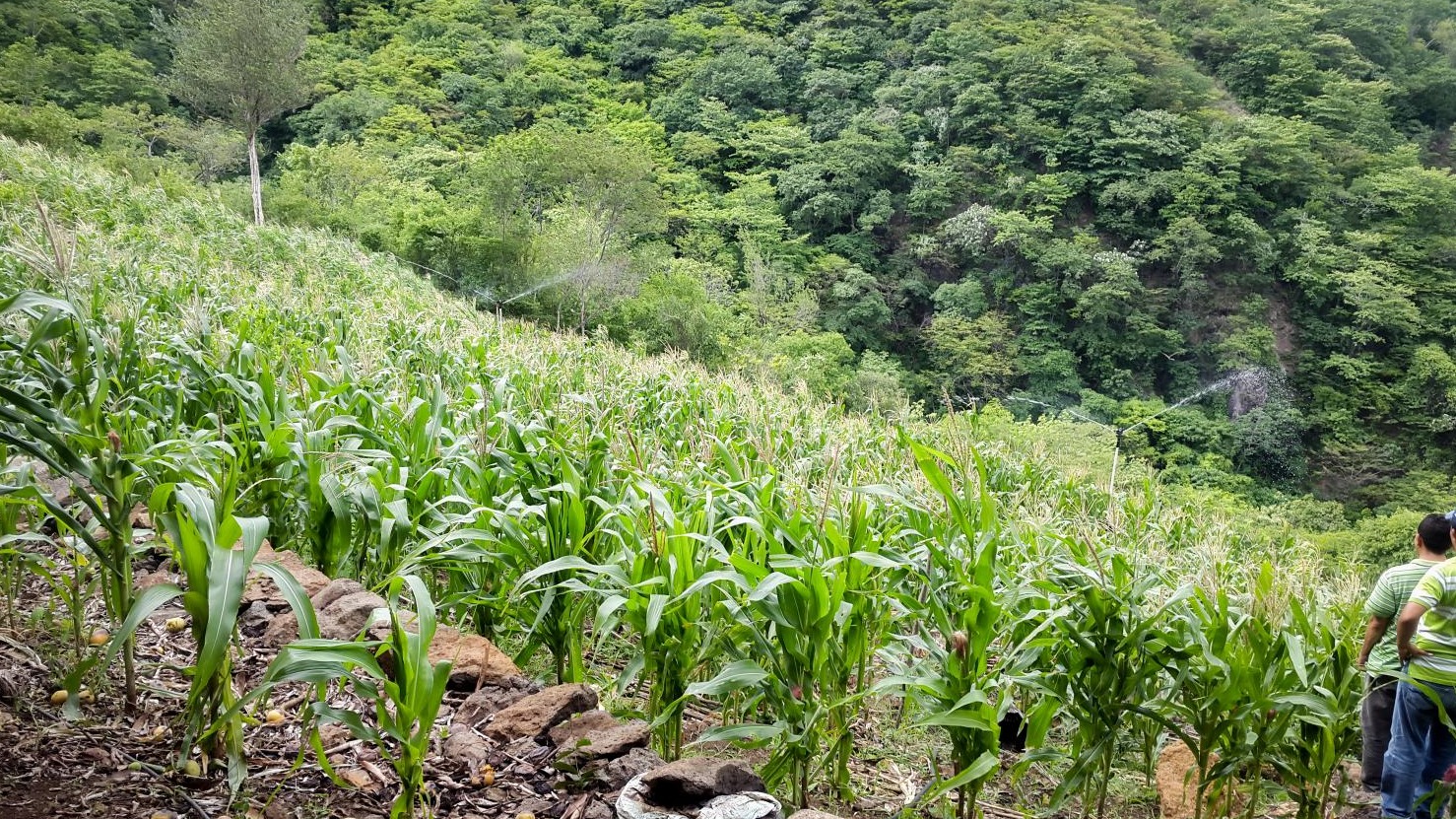Trees, roofs and tools boost climate resilience for water and food security
FAO is leading three Green Climate Fund projects in El Salvador, Jordan and Pakistan that help farmers adapt to climate change in water-stressed regions using native trees, rooftop rainwater harvesting and digital tools.

FAO supports the efforts of countries in the Central American Dry Corridor to increase climate resilience and improve food security.
How can rain-fed crops grow without rain? That is the question facing farmers in water-stressed regions where rising temperatures, prolonged periods of drought and other impacts of climate change threaten food security and livelihoods.
According to the Food and Agriculture Organization of the United Nations (FAO), climate solutions hold answers to tackling water scarcity and increasing food production in a sustainable way.
Here are three ways FAO-led Green Climate Fund (GCF) projects are helping farmers adapt to climate change in water-stressed regions with agroforestry systems in El Salvador, rooftop rainwater harvesting in Jordan, and digital tools in Pakistan.
Trees restore soil moisture in El Salvador
El Salvador lies in the Central American Dry Corridor, a drought-prone area with tropical dry forest that stretches across Guatemala, Honduras, Nicaragua, Costa Rica and Panama.
In this area of the world, El Niño events and climate change have led to more frequent and intense droughts and floods. In 2015, rainfall shortages resulted in a water and food crisis in El Salvador when the country lost 60 percent of its maize crops and 80 percent of its bean crops.
To replenish water sources and increase food security, FAO and the Government of El Salvador are collaborating on a GCF project that brings moisture back to soils by restoring degraded lands. As part of the RECLIMA project – a USD 127.7 million initiative – farmers improve water infiltration in the soil by integrating trees with crops and livestock grazing.
These combinations, known as agroforestry systems, are among the ways farmers can restore moisture in soils, reduce erosion and improve food production. Locking moisture in the ground and recharging local aquifers also helps to maintain critical water supplies in local springs.
Mauricio Ernesto Hernández, an agricultural engineer in El Salvador, says “We are training our farmers to plant forest trees which help us become more resilient to climate change.” For him, “trees are life.”
So far, thirty-three tree nurseries have been set up under the initiative, and over 13 000 hectares of critical ecosystems have been restored.
Tools to harvest and conserve water in Jordan
Jordan is one of the most water-scarce countries in the world. It is also one of the most vulnerable to climate change. Here, changes in rainfall patterns, rising temperatures and dwindling groundwater levels threaten food security and well-being.
This is because most farming communities are heavily dependent on rainfed agriculture: 75 percent of the cultivated land is rainfed, making efficient water management systems critical to preserving livelihoods and food security.
FAO is collaborating with the Government and partners on the implementation of a GCF project (with a total budget of USD 33.2 million) that provides rural communities with tools to harvest rooftop rainwater as well as save and reclaim water for household and agricultural use.
Nearly 84 000 people are expected to benefit from the seven-year project.
Digital technology for know-how in Pakistan
Life in Pakistan’s Indus River Basin revolves around agriculture. This is where 90 percent of the country’s agriculture outputs are produced, and where a quarter of the labour force earn their living in agriculture-related work.
In recent years, however, extended periods of drought and floods have affected millions of people, leaving them food and water insecure.
To help Pakistan respond to climate threats, FAO is working with the Government on a GCF project aimed at improving water management and increasing the climate resilience of this vital, food-producing region.
The project has a total budget of USD 47.7 million, and integrates digital technology into Farmer Field School activities. Farmers receive training on how to use apps to get up-to-date advisories on irrigation scheduling, as well as flood and drought warnings.
Muhammad Ikram is a farmer in Khanewal who says, “Due to climate change, we suffered financial losses caused by unexpected rains and storms. Now after using the app, we know about our crops' water deficiency and how much water our crops actually need as well as when.”
Water is life, water is food. Now is the time to deliver sustainable and climate-resilient water solutions that leave no one behind.


